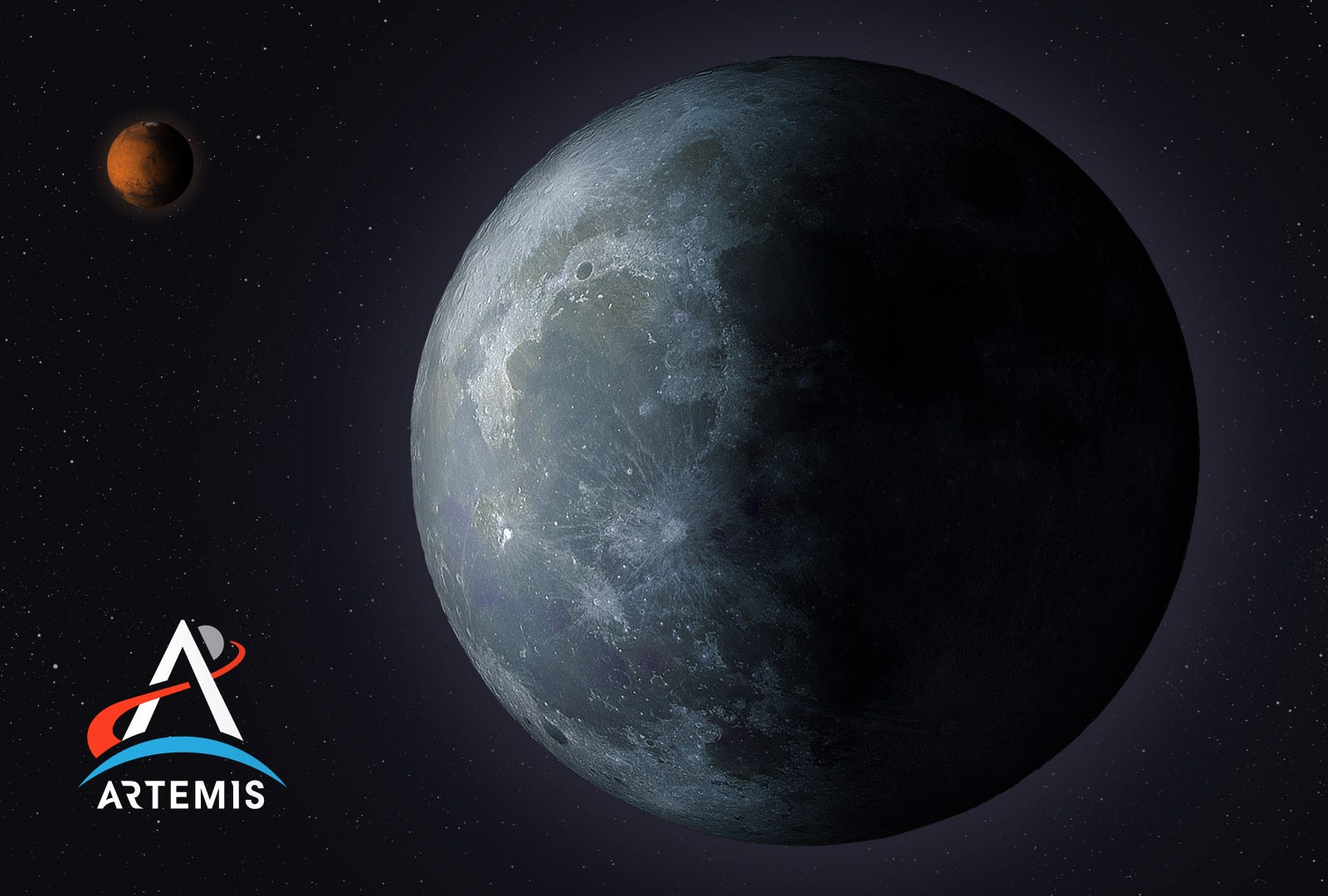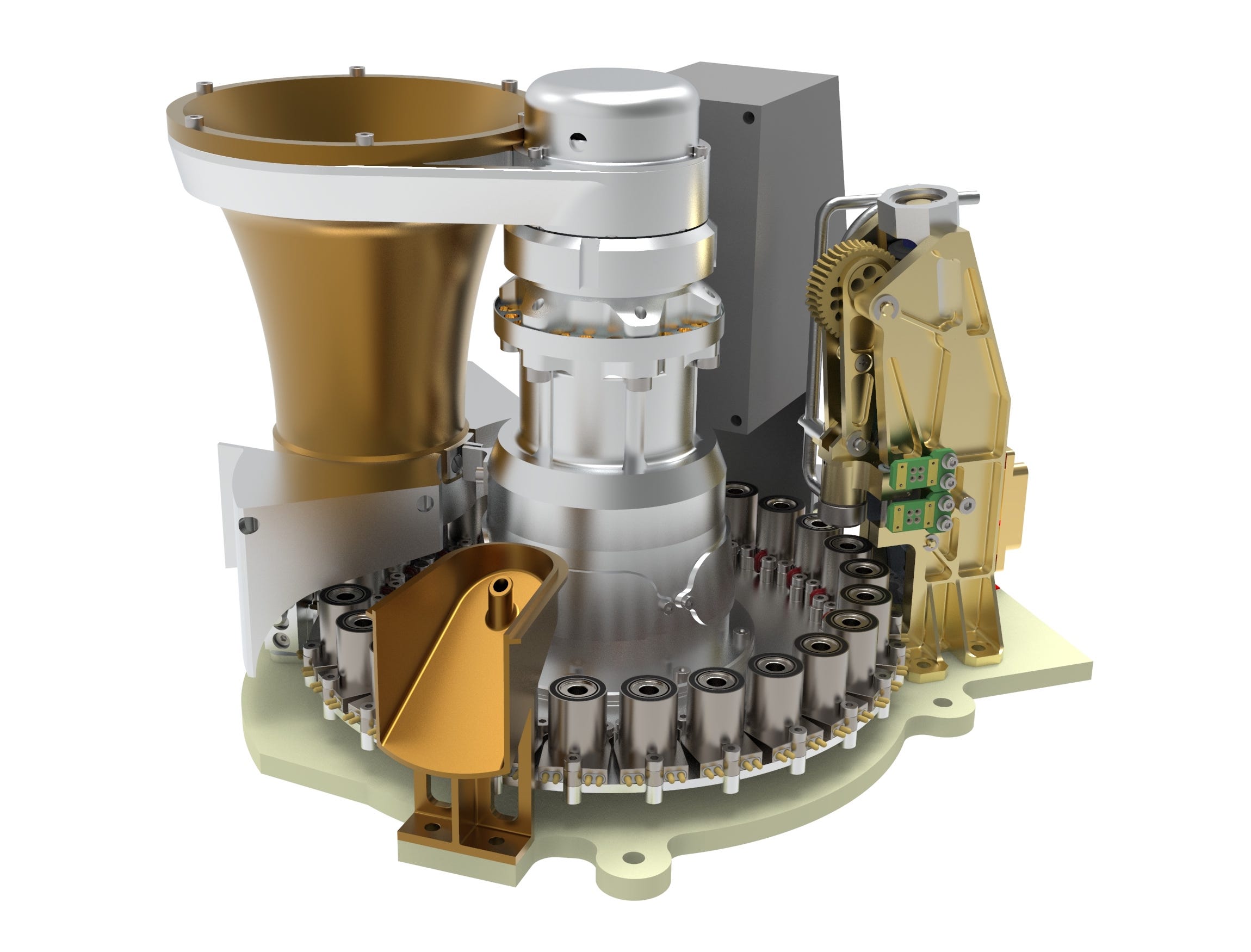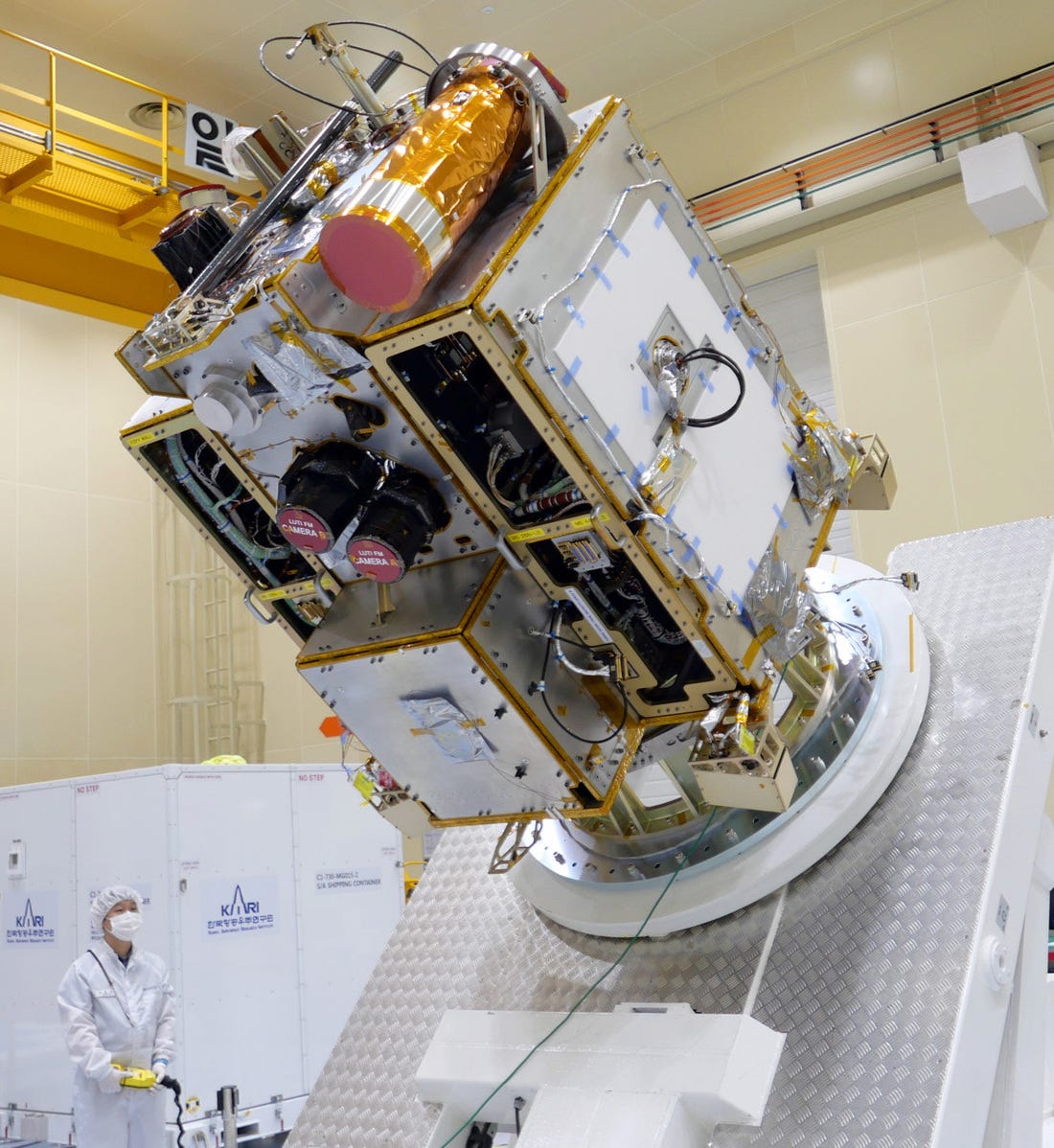Moon Monday Issue #49
Australia announces its first Moon mission, NASA completes SLS rocket assembly, demonstration of technologies to extract lunar resources in sight, and more Moon exploration developments last week.
Being able to tie a mission announcement to a fresh NASA solicitation, a recently published science result and a new policy study was fun! Enjoy this week’s top story being a mashup of these typically separate sections/stories.
Highlight, Science & Policy
Australia announced its first mission to the Moon. As part of their space agency’s (also) Moon to Mars initiative, they’ll fund a winning proposal by an Australian industry consortia next year to develop a lunar rover for a maximum cost of (Australian) $50 million. The rover, which should weigh less than 20 kilograms, will hitch a ride to the Moon in 2026 or later onboard a commercial lunar lander funded by NASA’s CLPS program. The semi-autonomous rover will explore the Moon’s south pole, and collect lunar soil to transfer it to the lander where a NASA-operated system will extract oxygen from it. This mission will thus demonstrate a key step towards establishing a sustainable human presence on the Moon.
With this deal, Australia is getting a ride to the Moon without having to develop landing technologies themselves, in much the same way the UAE’s Rashid rover will fly on ispace Japan’s lander next year and a Canadian rover will fly on a NASA-funded commercial lander in 2025. For NASA, this partnership allows it to leverage Australia’s experience in developing and remotely operating terrestrial mining systems while also providing another way to fetch soil if the lander’s own collector fails.

While it’s not explicitly stated in NASA’s release, the mission’s timeframe of 2026 fits a recent NASA solicitation that mentions flying an ESA-funded oxygen extractor on a commercial lander to the Moon’s south pole around Q1 2026. The system in question is a compact device called PROSPECT, made by European scientists who recently demonstrated the technology by extracting water from Moon rocks. Specifically, they did so with two Apollo samples, lunar soil simulants, and a lunar meteorite. A flight version of PROSPECT will also fly on the Russian Luna-27 mission to the Moon’s south pole in 2025 to demonstrate the technology.

Since PROSPECT’s static system doesn’t show major drops in extraction efficiency compared to complex and power-hungry traditional systems, its designers say the technology could be used in the future to swiftly grade collected raw lunar materials before large scale water extraction plants are setup and run.
Coming back to the mission, the demonstration would allow NASA to progress on an element of the multi-lateral, multinational Artemis Accords agreement—of which Australia is a signatory—concerning resource extraction and their safety zones. That element of the Accords is controversial as its resulting activities could violate the Outer Space Treaty. Related: A new, preprint study reviews the history and principles behind safety zones in outer space and other domains, its future implications for entities involved, and recommends implementing safety zones in an iterative, law-abiding manner.
Exploration
On October 9, NASA mated the Orion spacecraft’s stage adapter on the top of the SLS rocket’s second stage, completing the rocket’s assembly. Next, they’ll soon add the Orion spacecraft and its launch abort system on top of the adapter, which will complete all hardware elements required to launch the uncrewed Artemis I Moon mission sometime early next year. Meanwhile, ESA delivered a new Orion service module to NASA on October 14 for use in the second Artemis mission in 2023, which will send humans around the Moon. ESA’s service module is responsible for Orion’s propulsion, thermal, electrical power and life support systems.
NASA’s CAPSTONE mission’s launch on Rocket Lab’s Electron vehicle has slipped to March 2022 instead of later this year due to pandemic-related delays. The 25-kilogram CAPSTONE spacecraft is built by Advanced Space, and funded by NASA at $10 million, to prove the feasibility of the unique fuel-saving elliptical lunar orbit that the NASA-led Gateway space station will be in later in this decade. CAPSTONE’s team will also work closely with the NASA LRO team to make both spacecraft communicate with each other and demonstrate autonomous navigation in lunar orbit, a capability key to efficient operations when many spacecraft will be around the Moon in the near future.
South Korea’s first Moon mission, the KPLO lunar orbiter, is coming along nicely for its scheduled launch in August 2022. Engineers recently successfully installed the NASA-contributed ShadowCam imager on KPLO. The satellite and its instruments are currently undergoing thermal and vacuum tests to ensure that everything works properly in the harsh lunar environment.

NASA and the U.S. Department of Energy are working with the industry to mature radioisotope power system prototypes. Radioisotope thermoelectric generators are necessary for spacecraft to survive frigid lunar nights but are bulky and costly. The three new power systems NASA is working on in parallel have moving parts instead of being static, which increases their efficiency by three to four times. This gain can allow missions to carry lesser amount of an heat source, thereby reducing residual heat and spacecraft mass while leaving more room for science instruments.
The Times of India reports that ISRO’s Chandrayaan 3 mission to demonstrate a successful Moon landing, after the previous failed attempt with Chandrayaan 2, will likely be delayed yet again from its current late 2022 target. Sources within ISRO are saying the delay is due to the space agency prioritizing their Gaganyaan program to send humans to Earth orbit, whose first mission is also facing pandemic-related delays. This isn’t the first time ISRO has prioritized Gaganyaan at the expense of its space science missions. Their upcoming Venus orbiter Shukrayaan has been unable to secure a launch on the organization’s most powerful rocket, the GSLV Mk III, because the launch vehicle will be busy serving human spaceflight missions in the middle of the decade.
More Moon
Thank you Epsilon3 for supporting me and powering this edition of Moon Monday.
Everyone, I’m publishing this one-of-a-kind Moon exploration newsletter for free, with no ads. And it will stay that way. If you like my comprehensive coverage of lunar exploration and science, your support will keep it going.
